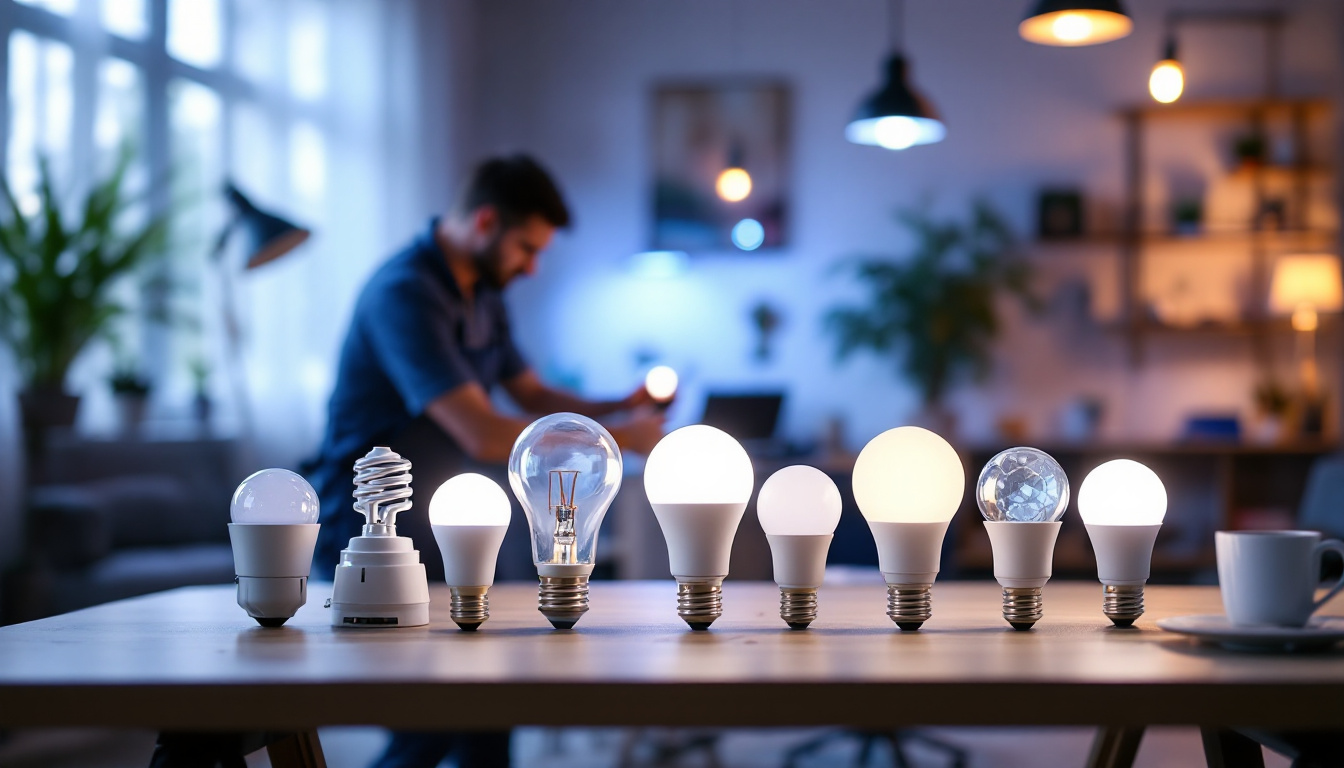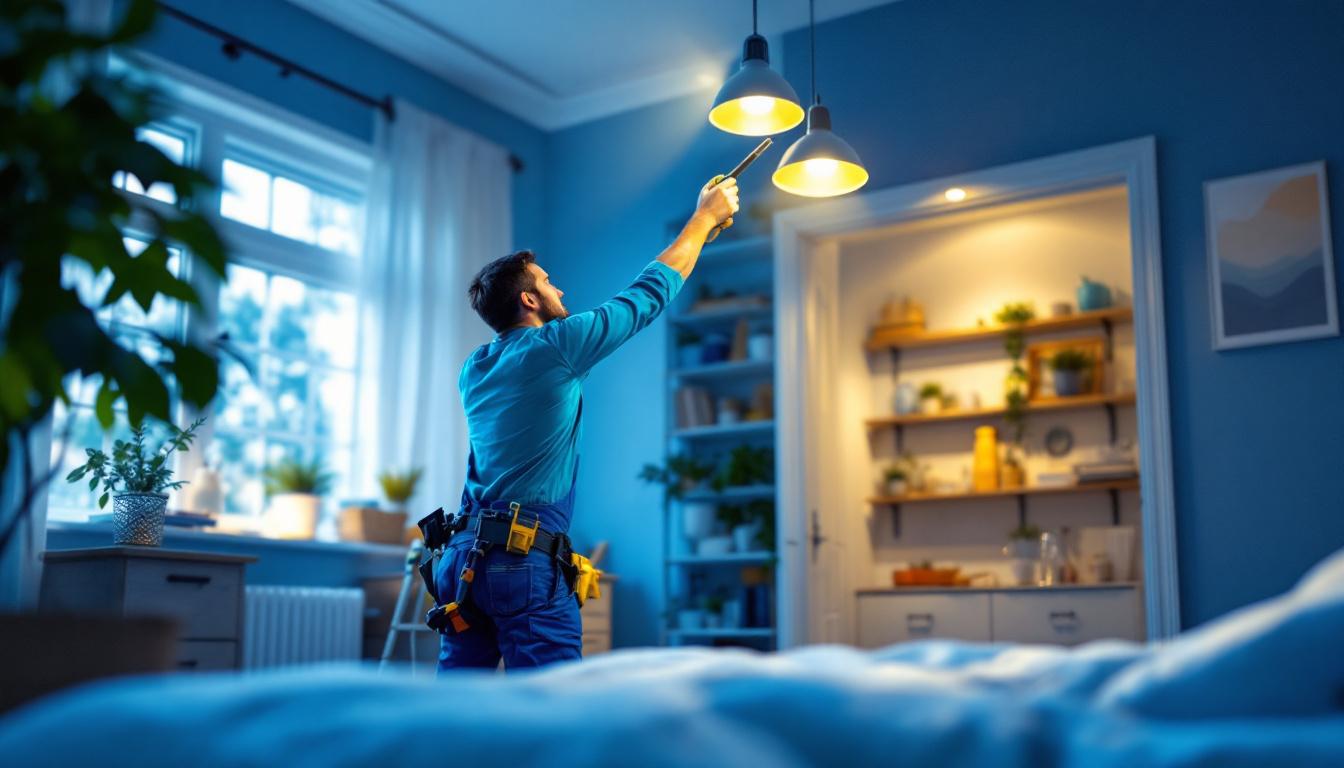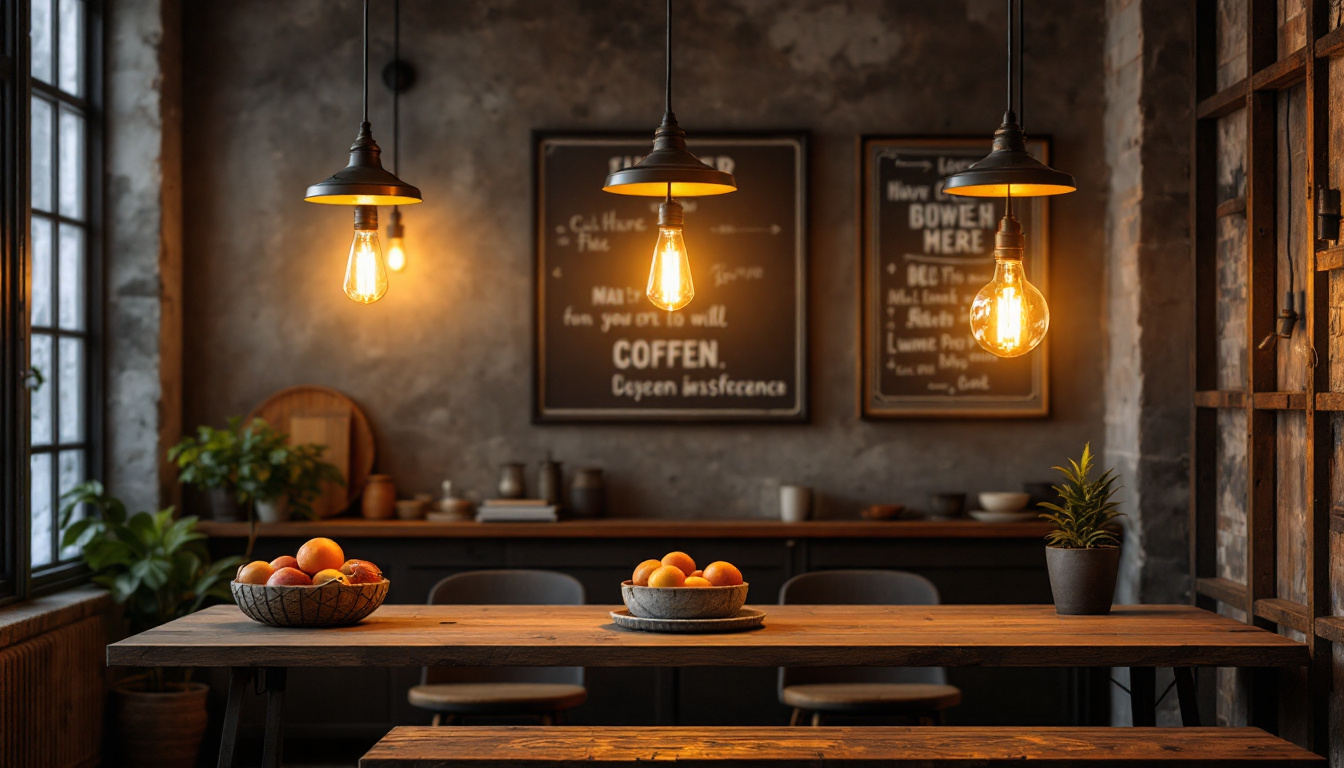
In the ever-evolving world of lighting solutions, LED pot light bulbs have emerged as a game-changer for both residential and commercial applications. Their energy efficiency, longevity, and versatility make them a preferred choice among lighting contractors. This handbook aims to provide comprehensive insights into LED pot light bulbs, covering everything from their benefits to installation techniques, ensuring that contractors are well-equipped to meet their client’s needs.
LED pot light bulbs, also known as recessed lights, are fixtures that are installed into a hollow opening in the ceiling. Unlike traditional bulbs, they provide a sleek, modern look while delivering high-quality illumination. Understanding the fundamentals of these bulbs is essential for any lighting contractor.
One of the standout features of LED pot lights is their energy efficiency. They consume significantly less power compared to incandescent or fluorescent bulbs, which translates to lower electricity bills for homeowners and businesses alike. Additionally, LED technology allows for a longer lifespan, often lasting up to 25,000 hours or more, which reduces the frequency of replacements.
Moreover, LED pot lights emit less heat, making them a safer option for enclosed spaces. This characteristic not only contributes to energy savings but also minimizes the risk of fire hazards associated with traditional lighting solutions. Furthermore, the durability of LED bulbs means they are less prone to breakage, making them a reliable choice for high-traffic areas or homes with children and pets.
LED pot lights come in various types, each designed for specific applications. The most common types include:
In addition to these types, LED pot lights are available in various color temperatures, ranging from warm white to cool daylight. This variety enables homeowners to create the desired ambiance in different rooms, whether it’s a cozy atmosphere in the living room or a bright, invigorating light in the kitchen. Some models even offer tunable white options, allowing users to adjust the color temperature based on the time of day or specific activities.
Another important aspect to consider is the beam angle of LED pot lights. A wider beam angle can provide general illumination for larger spaces, while a narrower beam angle is perfect for accent lighting or spotlighting specific features in a room. This versatility makes LED pot lights an excellent choice for both residential and commercial applications, as they can be tailored to meet the unique lighting needs of any environment.
For lighting contractors, understanding the benefits of LED pot light bulbs is crucial for making informed recommendations to clients. The advantages extend beyond mere aesthetics, impacting energy consumption, maintenance, and overall satisfaction.
Energy efficiency is perhaps the most significant advantage of LED pot light bulbs. By using up to 80% less energy than traditional incandescent bulbs, these LEDs can lead to substantial cost savings over time. For contractors, this presents an opportunity to promote energy-saving solutions to clients, enhancing the appeal of their services.
Furthermore, many regions offer incentives and rebates for energy-efficient lighting upgrades, providing additional financial benefits for homeowners and businesses. Contractors can leverage these incentives to encourage clients to make the switch to LED pot lights.
LED pot lights are built to last. With lifespans often exceeding 25,000 hours, they significantly reduce the need for frequent replacements. This durability not only saves on replacement costs but also minimizes the disruption caused by changing bulbs in high ceilings or hard-to-reach areas.
Additionally, LED technology is more resistant to shock and vibration compared to traditional bulbs, making them suitable for a variety of environments, including commercial spaces where durability is paramount.
Installing LED pot light bulbs requires careful planning and execution. Lighting contractors must consider various factors to ensure a successful installation that meets the client’s expectations.
One of the first steps in the installation process is selecting the appropriate location for the pot lights. Factors such as ceiling height, room function, and desired lighting effects should all be taken into account. For instance, in living areas, a combination of ambient and task lighting may be required, while in kitchens, focused lighting on work surfaces is essential.
Contractors should also consider the spacing between pot lights. A general rule of thumb is to space them approximately 4 to 6 feet apart, depending on the brightness of the bulbs and the desired light coverage. This spacing helps to avoid dark spots and ensures even illumination throughout the space.
Before installation, it is crucial to assess the electrical requirements of the LED pot light bulbs. Most LED fixtures operate on standard voltage, but some may require specific transformers or dimmers. Ensuring compatibility with existing electrical systems is vital to avoid issues down the line.
Safety should always be a top priority during installation. Contractors should adhere to local building codes and regulations, ensuring that all electrical work is performed by a licensed electrician when necessary. Proper insulation and ventilation are also important to prevent overheating and ensure the longevity of the fixtures.
When it comes to lighting design, LED pot light bulbs offer unparalleled flexibility. Contractors can create a wide range of lighting effects that enhance the aesthetic appeal of a space.
LED pot lights are available in various color temperatures, typically measured in Kelvin (K). Ranging from warm white (2700K) to cool white (5000K), the choice of color temperature can significantly impact the ambiance of a room. Warm white is often preferred for living spaces, while cooler temperatures are ideal for work areas.
Brightness is another critical factor to consider. Measured in lumens, the brightness of LED pot lights can vary widely. Contractors should assess the specific lighting needs of each space to recommend the appropriate lumens for optimal illumination.
Many clients appreciate the ability to control the brightness of their lighting. Therefore, ensuring that LED pot lights are compatible with dimmer switches is essential. Not all LED bulbs work seamlessly with dimmers, so contractors must verify compatibility to avoid flickering or buzzing sounds.
Choosing the right dimmer switch can also enhance the overall lighting experience. Smart dimmers, for example, allow for remote control and scheduling, adding an extra layer of convenience for homeowners.
While LED pot light bulbs are known for their longevity, occasional maintenance and troubleshooting may be required. Understanding common issues and their solutions can help contractors provide better service to their clients.
Some common issues that may arise with LED pot lights include flickering, dimming, or complete failure. Flickering can often be attributed to incompatible dimmer switches or voltage fluctuations. In such cases, replacing the dimmer with a compatible model can resolve the issue.
If a bulb fails prematurely, it may be due to poor quality or overheating. Contractors should ensure that the fixtures are properly ventilated and that the bulbs are sourced from reputable manufacturers.
Encouraging clients to perform regular inspections of their LED pot lights can help identify potential issues before they escalate. Checking for signs of wear, such as discoloration or flickering, can prompt timely replacements and maintain optimal lighting conditions.
The lighting industry is constantly evolving, and staying informed about future trends can give contractors a competitive edge. Emerging technologies and innovations are shaping the way LED pot light bulbs are designed and utilized.
As smart home technology continues to gain popularity, the integration of LED pot lights with smart systems is becoming increasingly common. Homeowners are seeking solutions that allow them to control their lighting remotely, schedule timers, and even adjust color temperatures through mobile apps.
Contractors should familiarize themselves with the latest smart lighting products and systems to offer clients comprehensive solutions that enhance convenience and energy efficiency.
Ongoing research and development in LED technology are leading to even more energy-efficient solutions. New materials and designs are being explored to increase light output while reducing energy consumption further. Contractors who stay abreast of these advancements can provide clients with the most innovative and sustainable lighting options available.
LED pot light bulbs represent a significant advancement in lighting technology, offering numerous benefits for both contractors and clients. Their energy efficiency, longevity, and versatility make them a top choice for a wide range of applications. By understanding the intricacies of LED pot lights, including installation techniques, design considerations, and maintenance practices, lighting contractors can elevate their services and meet the evolving demands of the market.
As the industry continues to grow and change, staying informed about trends and innovations will ensure that contractors remain competitive and capable of delivering exceptional lighting solutions. Embracing the potential of LED pot light bulbs is not just a smart business decision; it is a commitment to providing clients with the best lighting experiences possible.
Ready to take your lighting services to the next level? Look no further than LumenWholesale for all your LED pot light needs. We provide lighting contractors with the highest quality, spec-grade lighting products at prices that can’t be beaten. Say goodbye to unnecessary markups and hello to a vast selection of reliable, high-performance lighting that meets the strictest industry standards. With the convenience of free shipping on bulk orders, you can stock up on the best lighting solutions without any hidden fees. Elevate your projects with the unbeatable value and quality that only LumenWholesale can offer. Wholesale Lighting at the Best Value is just a click away.

Discover essential tips and common pitfalls to avoid when using pull strings for electrical conduit.

Discover expert tips and strategies for lighting contractors embarking on can lights remodel projects.

Discover effective strategies for lighting contractors to tackle common industry challenges.

Discover the perfect blend of rustic charm and industrial edge in lighting design.